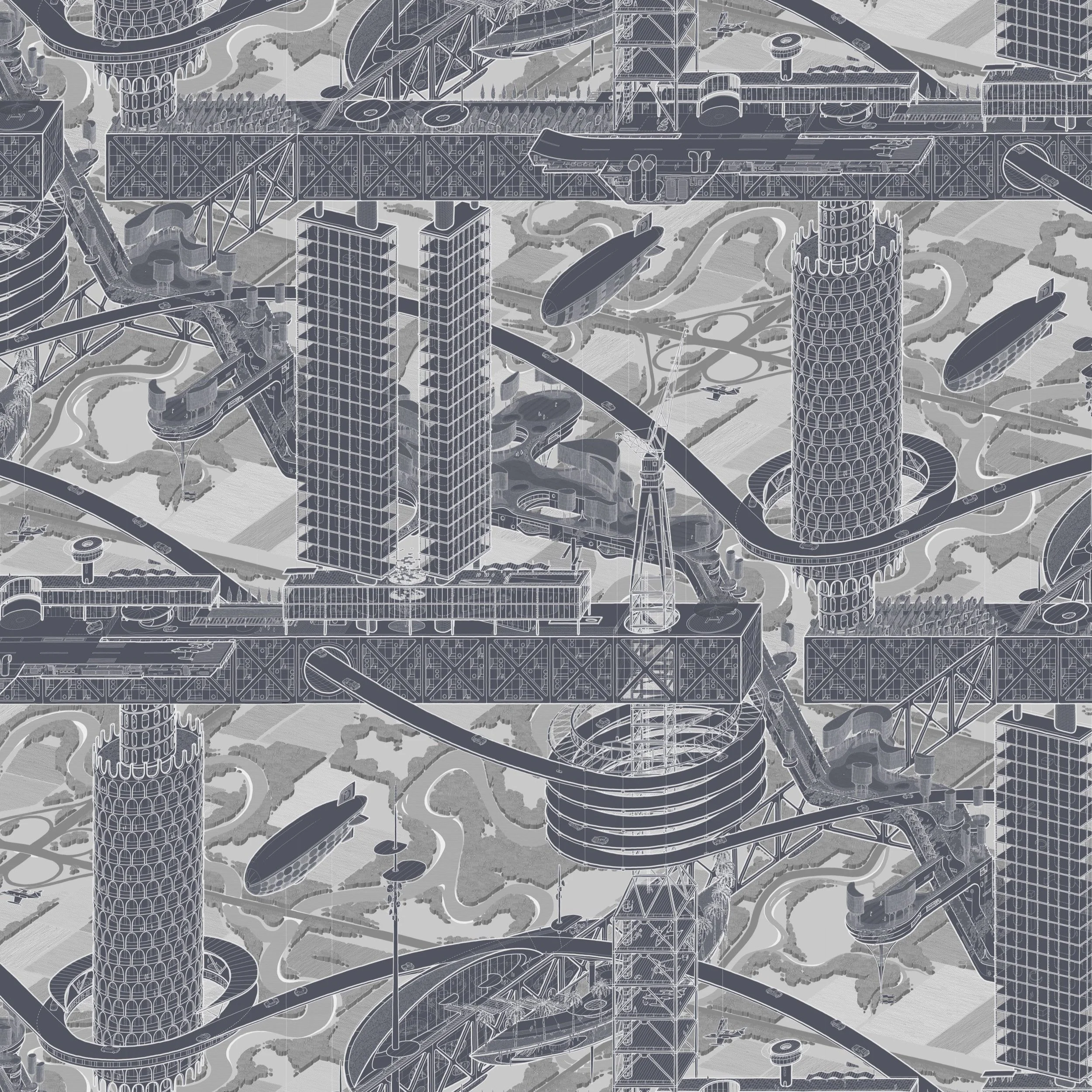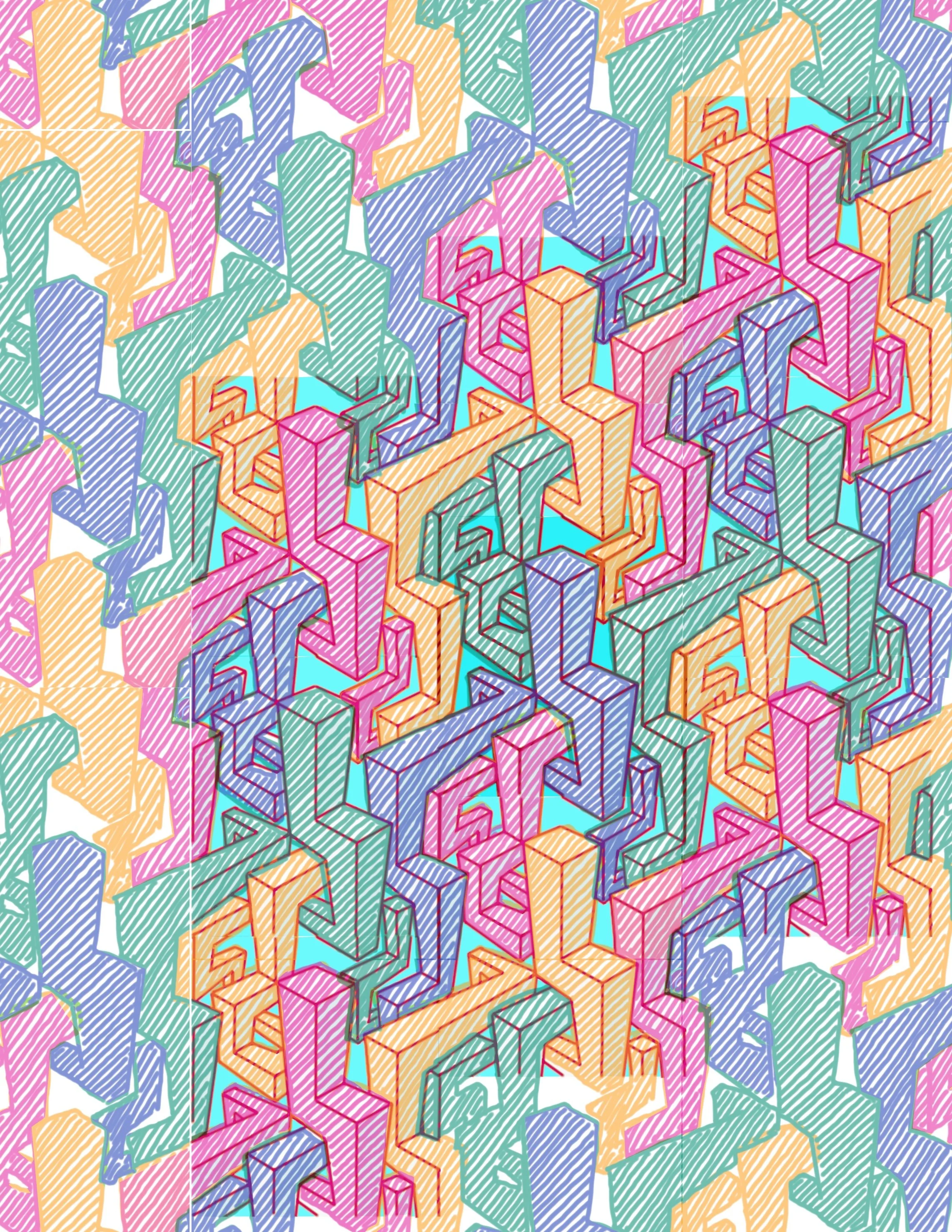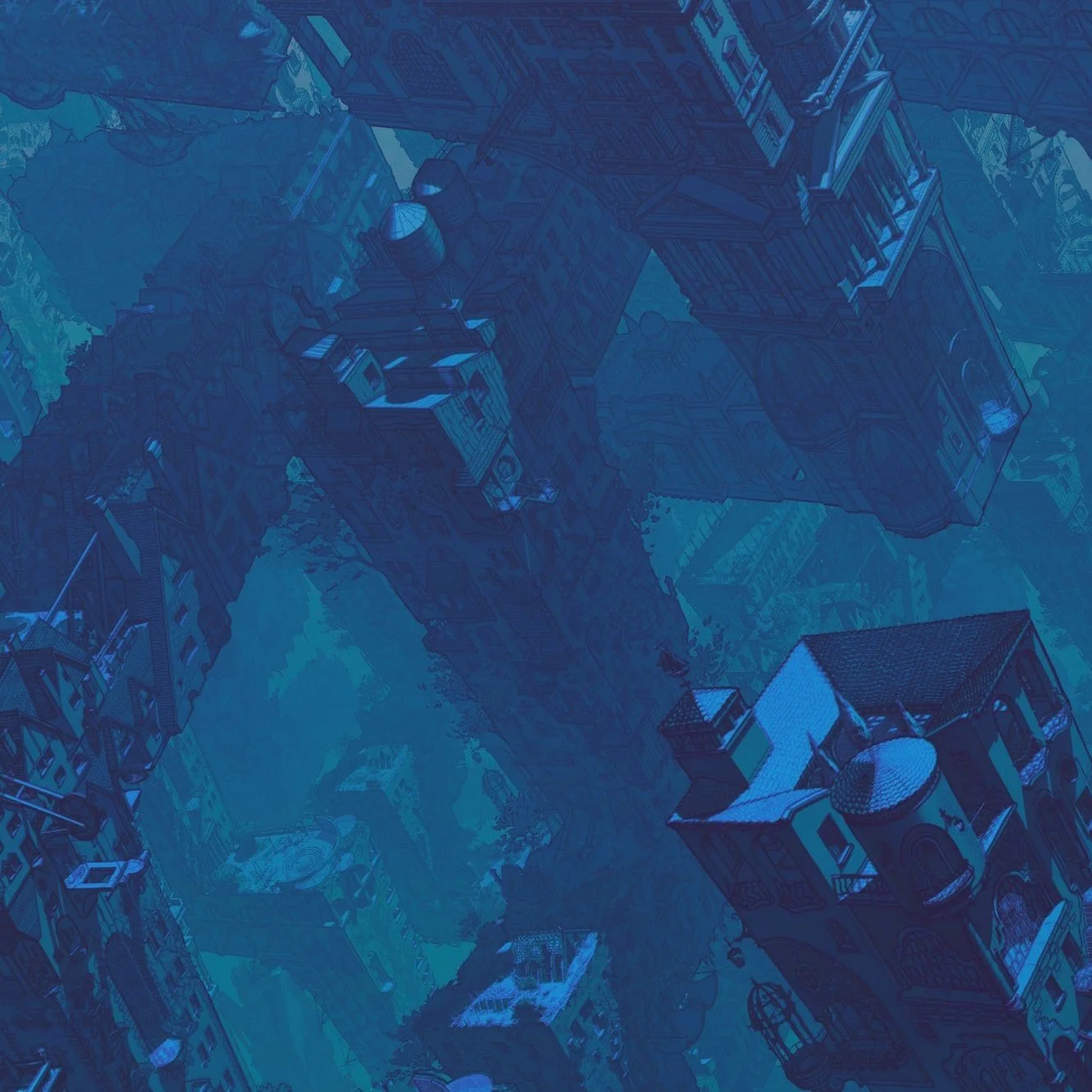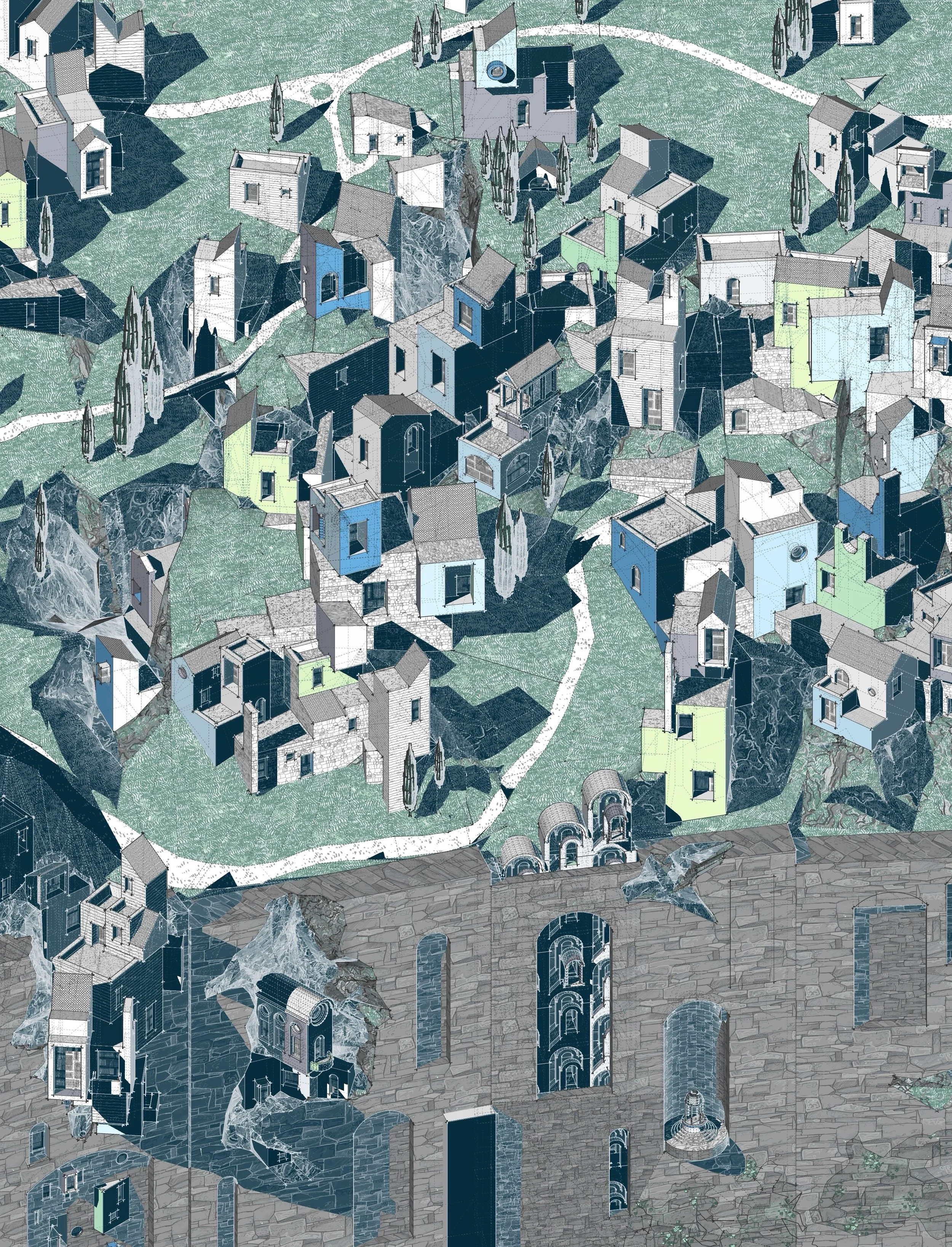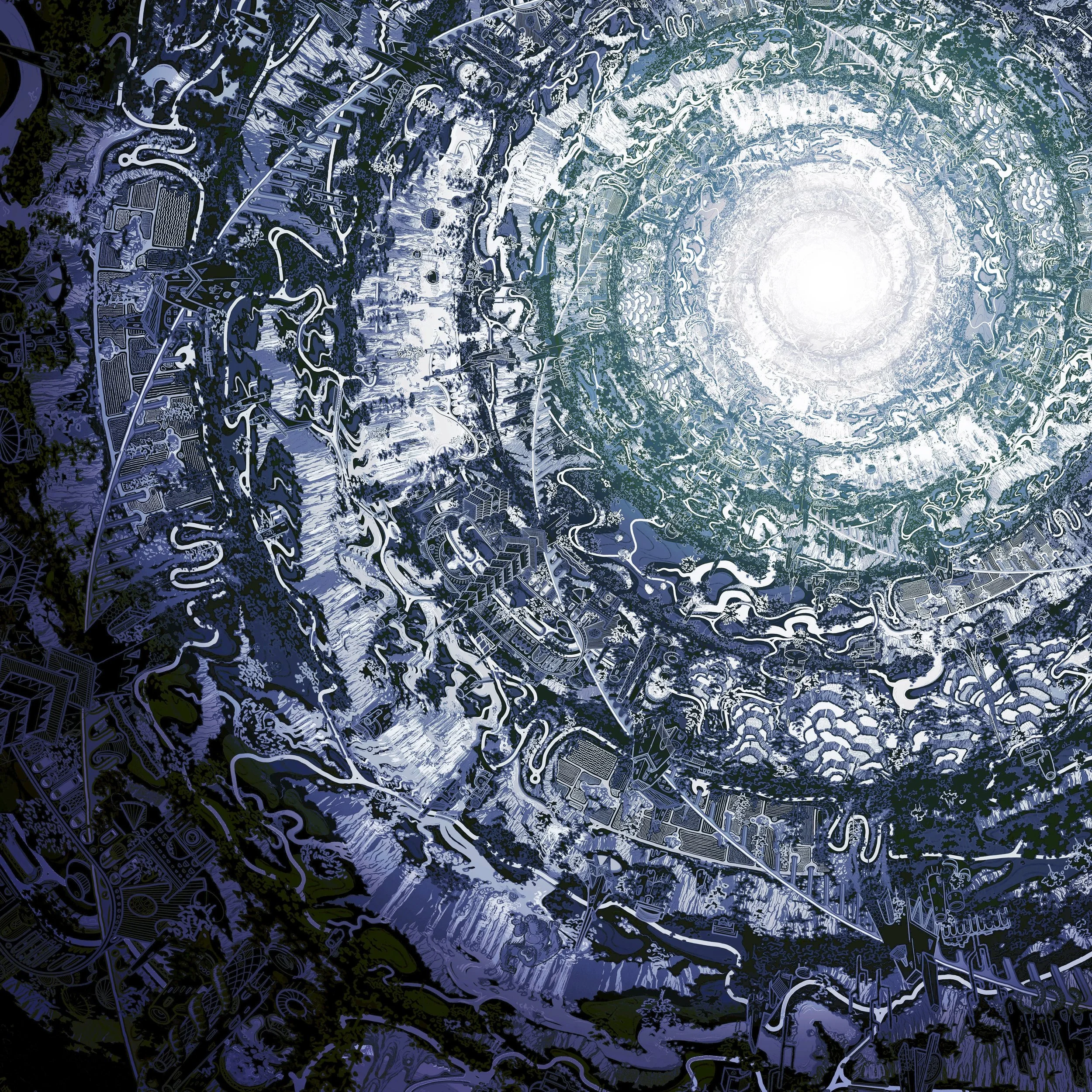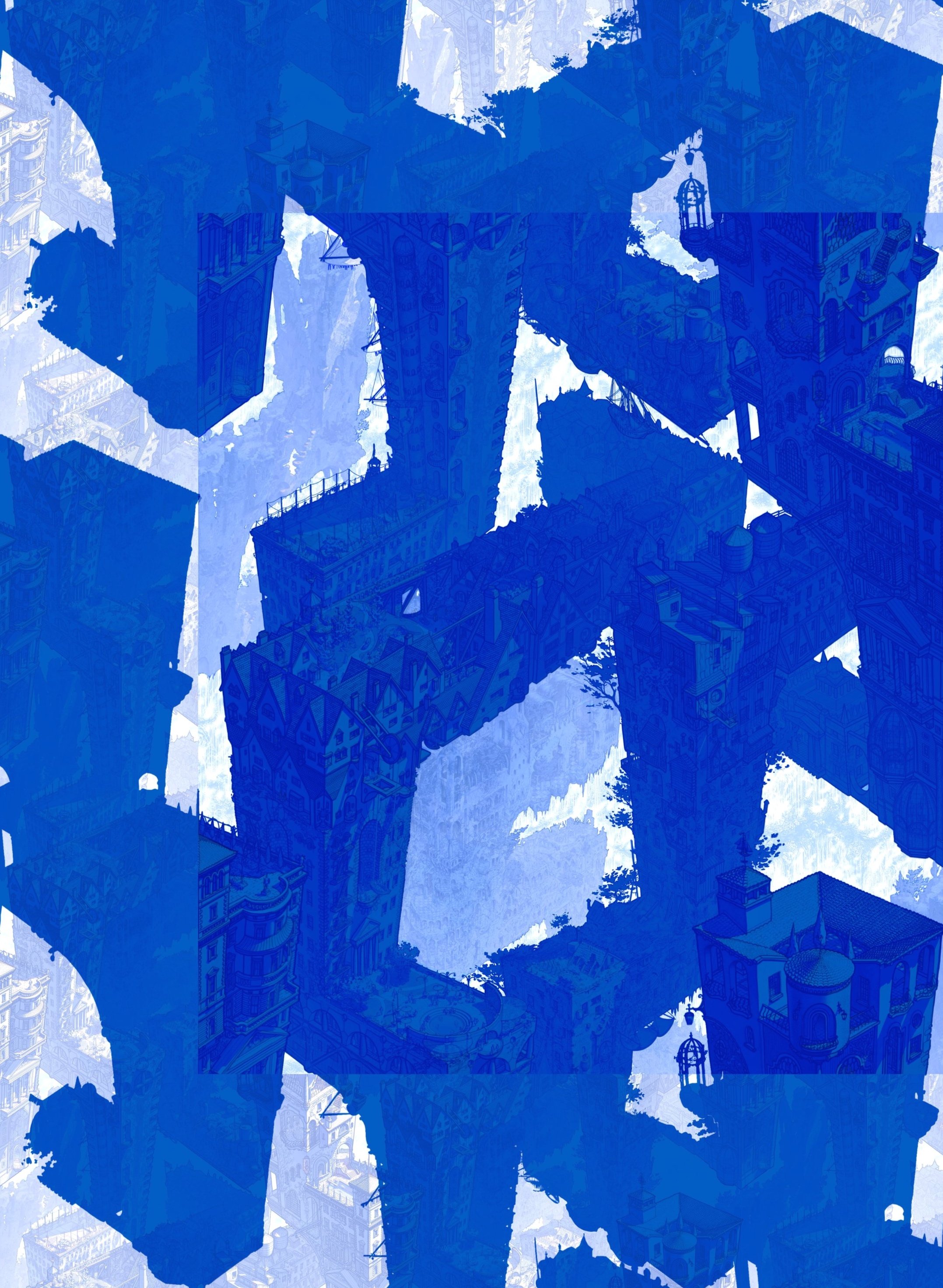-
For me, everything always begins with a hand drawing - that initial step in the creative process can lead in numerous directions, and the same initial sketch can evolve into an artwork, or a design project, or both.
In my artwork I combine techniques borrowed from the decorative arts, like half drop wallpaper patterns, with geometric experimentation, to create works that are not constrained by scale or a single composition.
The outcome of this process is not always evident during the initial stages of testing an idea - a concept may end up as a fabric print, an animation, or a series of semi-abstract artworks, and may branch and evolve in ways that seem only tangentially connected to each other.
Gallery / Laboratory
-
This piece sought to capture the feeling of isolation during lockdown. The islands within the dreamlike sea depicted surrounding my home are composed of elements from places with personal significance to me, but that could only exist for me in my imagination while the pandemic was at its worst
-
In parallel with other work over recent years I have engaged in a series of long-term drawing projects, which use a shared approach to depicting imaginary cities.
Each city is generated from repeating elements, with a different geometrical basis used for each drawing. By building up the drawing from smaller elements high levels of detail can be achieved visible in close-up extracts, while the geometric structure is more visible in wide views, and can be framed to create semi-abstract compositions.
I developed this means of working, comprising small elements that can be effectively drawn on an iPad screen, which are then assembled to create a larger composition, after being diagnosed with Parkinson's 10 years ago.
I initially started drawing on the iPad as having an 'undo' button is a powerful weapon against accidents caused by tremor and dyskinesia, but in time I started to feel that this means of drawing had its own potential: it was not just a way to replicate old ways electronically - like all drawing tools it brought its own constraints and opportunities, with the potential to create something new.
In working digitally in this manner I see parallels with what happened in the 1970s and 80s with synthesisers in music: something that was initially judged on the extent to which it could replicate traditional instruments, and was seen as putting older methods and skills at risk of obsolescence, evolved into something entirely new that extended what is possible.
Above: Impossible City 2 - preliminary detail sketch
Explore the Impossible Cities
Impossible City 1
Impossible City 2
Impossible City 3
-
…how it is interpreted by the eye, and how artists and architects over millennia have engaged with perception, to communicate intent that may range from devout to disreputable. From late gothic vaults, Islamic muqarnas, and baroque church plans, to trompe l’oeil stage sets, practical special effects, and fairground sideshows.
It isn’t really about refining geometry to it’s pure essence - I can appreciate that but it’s not what excites me. It is instead about sensation: form, scale and light as a tool for evoking feelings, and for telling stories.
I have been fascinated by the geometric rules that humans have created in order to simulate real life since I was a small child. I can vividly remember the evening when my father first explained to me the concept of perspective drawing (he is an Architect too…) - and ever since I have been exploring the possibilities and testing the limits of established modes of architectural representation.
Even as a child I could intuitively grasp the huge power of perspective to engage the viewer: no training is needed to understand what is depicted, as the means of representation broadly simulates vision. But as time passed I found myself frustrated by its limitations - the straight jacket of the single point of view, the distortions creeping into the periphery. Pre-renaissance modes of composition, and fringe perspective techniques such as those used as the basis of panoramic dioramas hinted at alternative possibilities.
Above and below: studies of vault geometry, including forms based on Islamic muqarnas and gothic fan and diamond vaults

